This is a very broad-spectrum topic, so I’ll be narrowing it down to freshwater fishkeeping. I will be honest, I know absolutely nothing about saltwater tanks. I tried, it’s complicated, but maybe one day. Even freshwater can be broad but we’ll discuss the basics and I’ll be adding a lot more of my own two cents in this discussion, as it’s the discussion I have most often at my pet store job.
How to start a fish tank

There are two main things you want to consider before you start: what type of fish are you looking to keep and how much space do you have for an aquarium? The space question is the most important one to answer. The larger the tank, the heavier it will be. Getting above 75 gallons, you’ll want to make sure your floor can withstand the weight. There are horror stories of tanks dropping through the floor. Also worth noting that if you live in an apartment (like me), you’ll want to ask your leasing office/ landlord if you can have an aquarium and what the limit is. My apartment complex gave me a limit of 20 gallons, which is perfect for me. There are a lot of fish that need larger tanks, angelfish being a commonly desired fish but they need over 50 gallons to keep them. Cichlids are stunning and vibrant but need a 4ft long tank minimum to space out the aggression. Oscars and Jack Dempsey’s get absolutely massive and need well over 125 gallons. All things to keep in mind before we start.
No matter what size you start with, a 125-gallon for an Oscar or a 5-gallon for a betta, you will need to do what’s called “cycling your tank.” This is where a lot of people get lost but we’ll get through it together. There are two ways to cycle your tank: fish in cycle or fishless cycle. I will always recommend a fishless cycle as it’s more humane to the fish and has less risk of death. A fish in cycle is exactly how it sounds: you get a tank, get a fish, and fight ammonia for an unknown amount of time until it levels out. A fishless cycle is more tedious but it truly does work. Regardless of what way you choose, you’ll need a good dechlorinator (I like to recommend Seachem Prime since it gets rid of chlorine and chloramine as well as neutralizes ammonia), a bacteria starter (I love Seachem Stability), and some high-quality fish food (I use Fluval Bug Bite flakes).
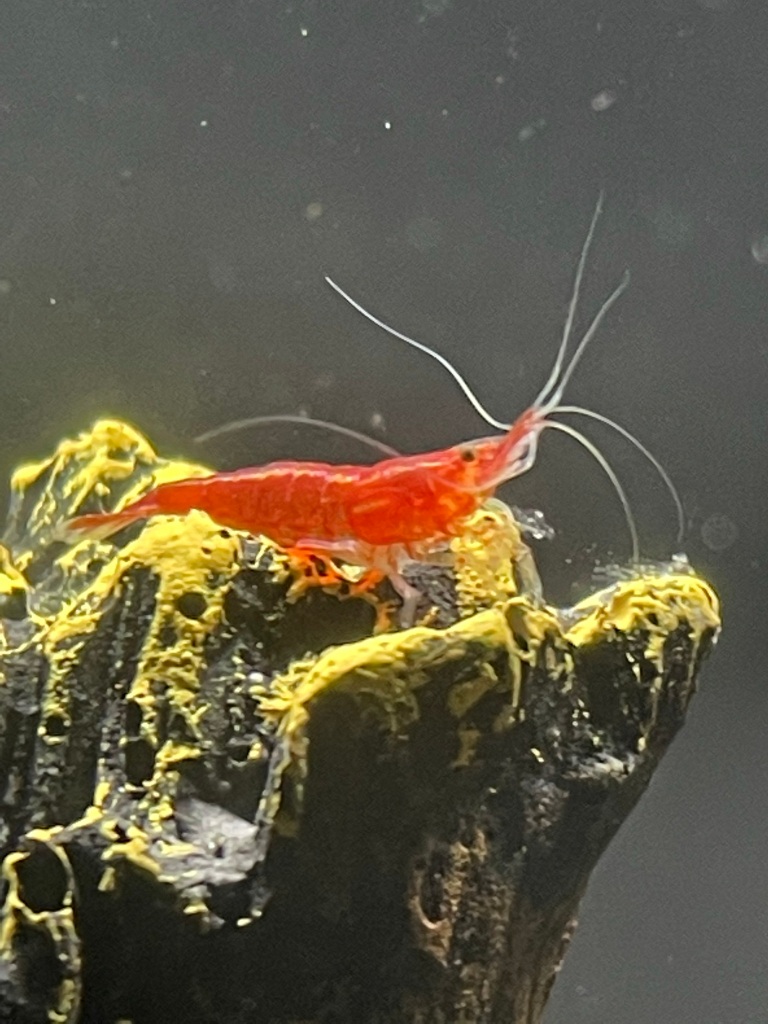
Before we get into how to do a fishless cycle, let’s talk about everything leading up to it. You got your tank and it fits in your space. You got your substrate (gravel, sand, or plant substrate). If it’s gravel, you’re going to want to wash it off with hot water in your sink. Never use soap for your fish. Soap will kill everything in your aquarium. Once you’ve rinsed off your gravel and decor, decorate your dry tank. For substrate, the rule of thumb is 1 pound for every gallon. If you have a 10-gallon aquarium, you’ll want 10 lbs of substrate. Next, you’ll pour your water in. Some people will use the bottom of an empty two-liter soda bottle with holes poked in the bottom to distribute the water and not create a hole in the substrate. It’s up to you if you care enough to do this. Once the tank is filled, you’ll want to add your water conditioner. Follow the directions on the bottle for how much to add. Plug in your filter and watch it run. It normally takes about 5 minutes for the water conditioner to work its way through the water but you can let it run longer if you want to be safe. If you’re keeping tropical fish, plug your heater in as well. The temperature will vary based on what you’ll eventually stock the tank with. Finally, we begin the fishless cycling process.
Fishless Cycle
Cycling an aquarium. What does that even mean? Well, it’s a bit of a science experiment. Cycling a tank is a basic way of saying establishing a nitrogen cycle. You’ll need bacteria in your tank (hence the bacteria starter) to eat the ammonia, which will convert to nitrite, which will convert to nitrate. Why do we even need the nitrogen cycle in an aquarium? You see, uneaten fish food and fish poop converts to something called ammonia. Ammonia is incredibly toxic to fish, even in small amounts. Establishing a bacteria colony is what converts ammonia into a safer form for the fish called nitrate. Wait, didn’t you say nitrite and nitrate? Nitrite is the annoying middle man, still not safe for fish but not as toxic as ammonia.
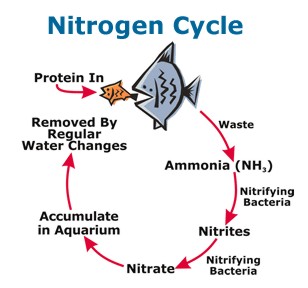
To do a fishless cycle, you’ll need a bacteria starter and an ammonia source. Avid fish keepers typically use bottled ammonia but if you’re just starting out, you can just use the fish flakes we got earlier. If you went with Seachem Stability for your bacteria, you’ll probably notice that the bottle says to put a cap or two of the liquid every day. I found out from doing some research that the bacteria actually starts to die off once you open the bottle and it’s actually more helpful to just pour the entire bottle into your tank. Remember, we’re not getting fish for at least 6 weeks so it won’t hurt your tank. Once you pour in the bacteria, your new daily ritual begins. You can choose to either do this every morning or every night but you’ll “ghost feed” your tank once a day, giving the fishless tank as much food as you think you’ll be feeding your future fish. Normally, it’s just a small pinch of food. You’ll do this every single day until your tank is cycled. You may also notice your tank getting cloudy with what looks like white particles in the water. This is normal and it’s called a bacteria bloom. Just let it do its thing. If you clean it, you’ll only be waiting longer for fish.
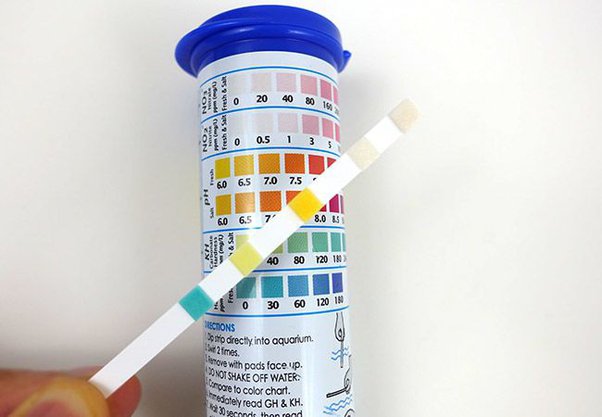
How will I know it’s cycled? You’ll either want to get your own water test kit (API has the classic water test strips or you can get the Freshwater Master Test Kit, which I personally love) or you can actually have your water tested for free at PetSmart. What you’re looking for is a low level of nitrate, zero nitrites, and zero ammonia. Your PH and alkalinity will vary on whatever species you intend to keep in your tank. If you’re using the test strips, the nitrate tab is typically located on the top of the strip and should turn light pink. Most test strips do not include the ammonia test strip so be sure to grab those as well. The ammonia test strips are normally yellow when dry and should stay yellow after testing, as that means there’s no ammonia in your tank. When everything looks good, you’re ready for some fish!
Getting Your Fish

When you first get your fish, you won’t want to get all of them all at once. Even though you’ve cycled your tank, it’s still new. Your freshly cycled 20-gallon won’t be able to hold 10 fish on the first day. Start small and only get 3 – 5 fish on your first run. Monitor them for at least 2 weeks before adding more. It’s also very important to remember that you never want to pour the water from your fish bag into the tank. Most major fish retailers use a massive sump system for their tanks, meaning that diseases are easily transferred between all of the tanks. Just because you saw a sick fish 3 tanks down does not mean that bacteria isn’t in the tank you got your fish from. You will, however, want to float your bag of fish in your tank water to let them acclimate to the temperature of the water in your tank. Forgetting this step can shock them. You can also do something called drip acclimation, which is where you drip water slowly from your tank into their bag. This can be a little complicated but helps minimize the risk of new tank syndrome.
When your fish are ready, net them out of their bag and allow them to swim out of the net into your tank. In the future, once you’re more comfortable with fishkeeping, you may want to invest in what’s called a quarantine tank, which is a smaller tank used for new fish to monitor their health and treat them if needed so your existing fish don’t get sick. If you’re nervous about this journey, a great starter fish is a betta.
Betta Fish
If you’re anything like me, you probably grew up keeping a betta in a bowl or a decorative vase with some pebbles and a little plant. No filter, no heater, just dump the water out every once in a while and put the fish back in with fresh water. That is not the case anymore, which shocks a lot of people. Keeping a betta (or any fish) in a bowl causes a lot of problems for the fish. First of all, it’s boring. They’re too small to actually put anything in so the fish is stuck swimming in circles for its entire life. Imagine being confined to a room where all you could do is walk in circles or lay on the hard floor. That’s a bowl.
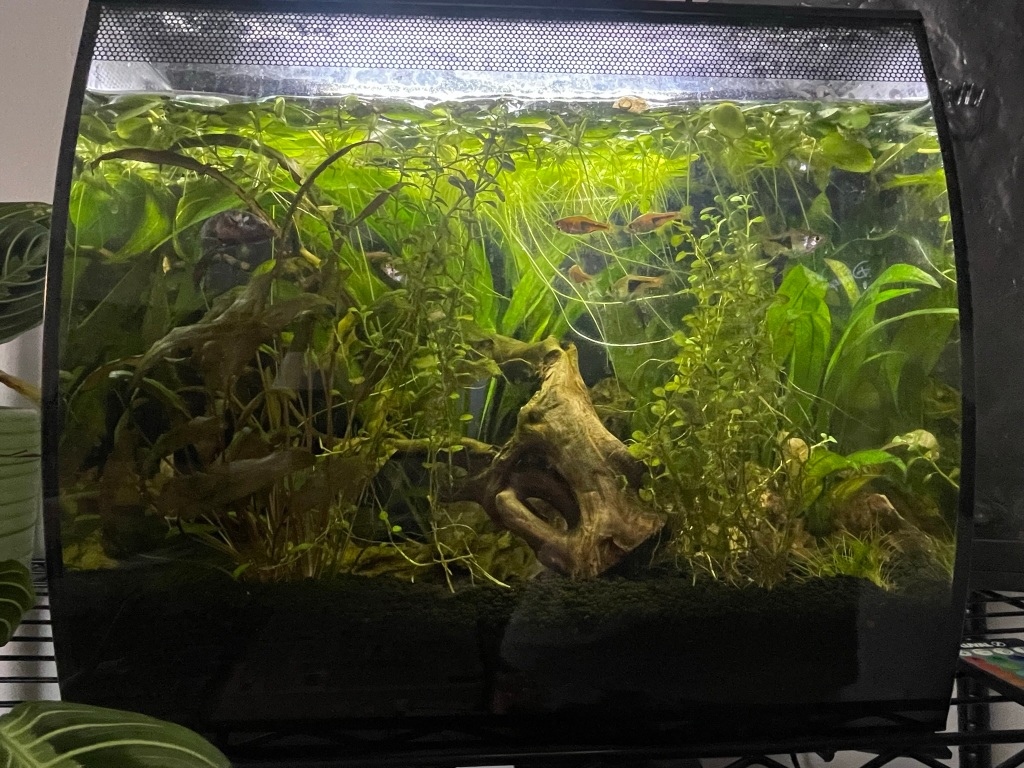
Bowls can also be very stressful. The round shape of it can actually disorient fish and stress them out substantially. Bowls and vases also don’t allow for any surface agitation, which means the fish isn’t getting oxygen. Yes, despite being an aquatic animal, they still need oxygen. Bettas have this cool thing called a labyrinth organ which allows them to pop up to the surface for air. They still need oxygen in their water or they’ll be constantly popping up for air. Lastly, it’s small and cramped. No matter how small the fish may be, they still deserve to spread their fins and explore like they would in the wild. Now, let’s get back to how to properly care for a betta fish.
Bettas, also called Siamese fighting fish, are solo fish. They are very aggressive and should not be kept with other fish. Please remember that they are animals, not humans, and do not require companionship. I promise you, your betta isn’t lonely. The minimum tank size is widely debated right now but the general consensus has landed on 5-gallons. I personally keep mine in a 10-gallon. Bettas are tropical, meaning they need a heater in their water. They should be kept at 80F at all times, the lowest they can tolerate is 75 and the highest they can tolerate is 82. You’ll also want to make sure that the decorations you place in your tank are not too sharp or they’ll rip their fins. Silk plants or even live plants are the safest things to put with your betta.
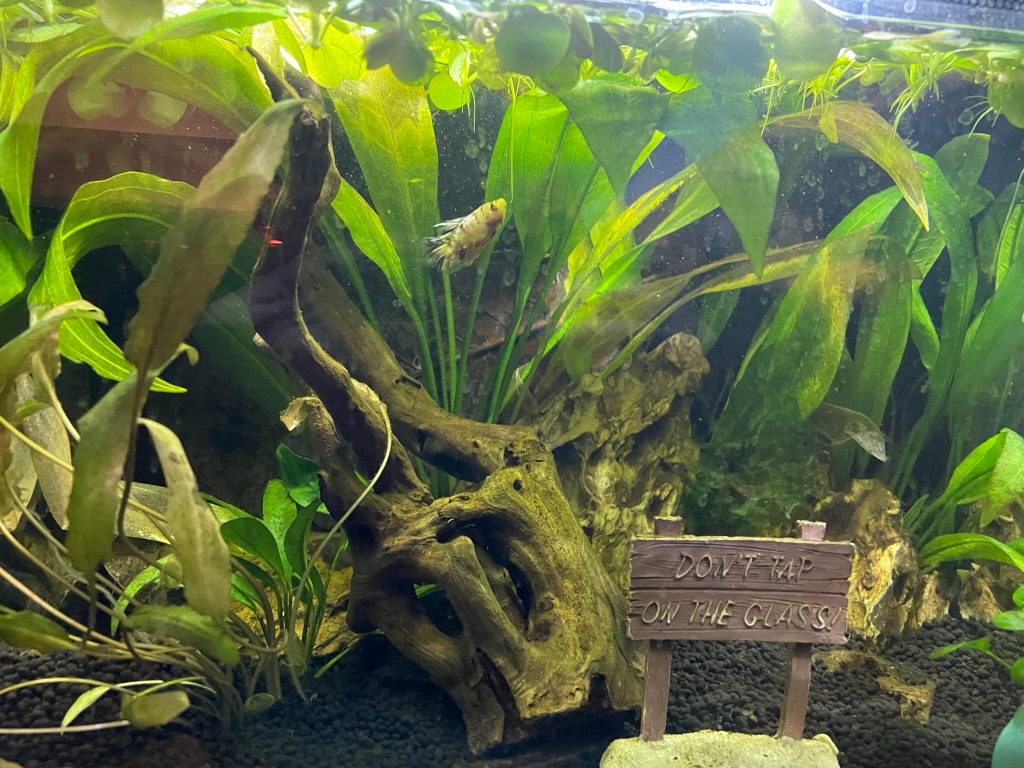
The better you can take care of your betta, the more they will flourish. Their colors will pop, their fins will look silky, and they’ll be swimming with joy all over the tank. Some people have even managed to teach their bettas tricks, like jumping through hoops. They will remember their human and get so excited to be fed. Remember that bettas are pigs and can easily eat themselves to death. Fish, unlike humans, do not have anything to tell them that they’re full. It takes a lot to starve a fish but it’s very easy to overfeed a fish. Bettas are also one of the most hardy fish you can keep, so they’ll be very forgiving of your mistakes, which is why they’re great starter fish.
If you’ve already had a betta fish and want to spice things up a bit, get it in a 20-gallon and think about some small schooling fish as tank mates! You’ll want at least a 20-gallon tank to spread out the aggression and have a lot of places for hiding. The only real safe fish that can go with a betta in a 20-gallon are neon tetras, white clouds, rasboras, or other nano schooling fish. Having a large school of these tankmates will also lessen the chance of your betta singling one out to bully or eat. If you’ve been googling tankmates for bettas, you may have come across betta sororities. I will not be discussing that as I have seen 90% of them fail and it is not worth the risk. Please do not consider trying a betta sorority, especially if you are new to fish keeping.
Cleaning your Tank
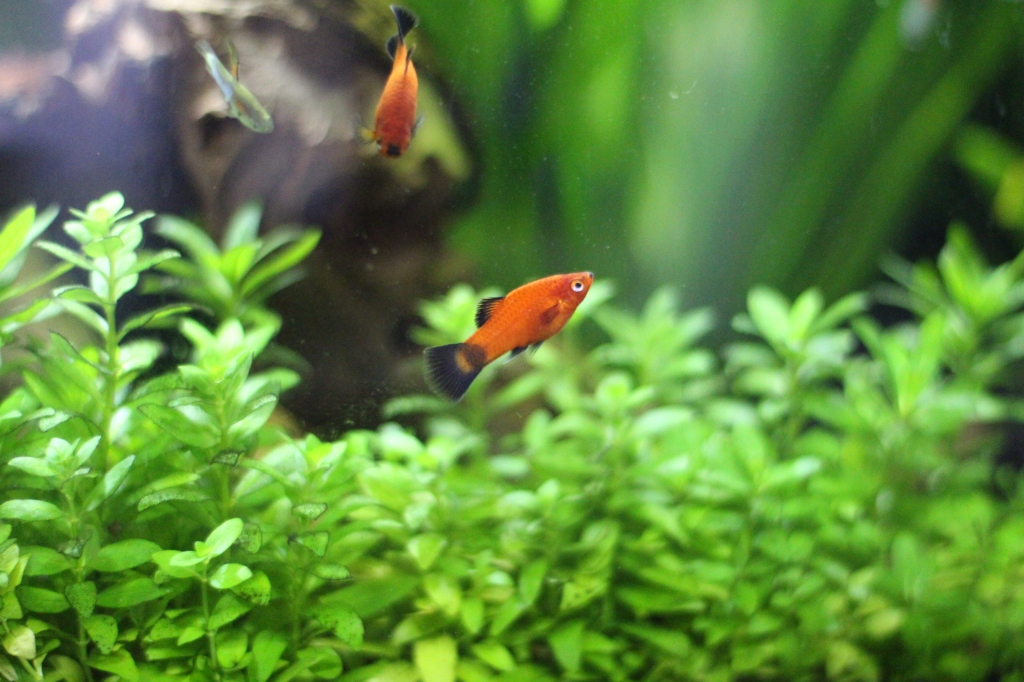
The most important thing you’ll be doing from here on out besides feeding your fish is cleaning their home. The frequency of water changes will depend on what fish you’re keeping and how many fish you have in your tank. A 10-gallon with a single betta can go a month without a water change while a 20-gallon of 15 mollies could use a weekly or biweekly water change. Testing your water is how you’ll know when it’s time. When your nitrates are high, it’s time for a change.
It’s not as simple as taking some water out and putting new water in. You’ll likely have uneaten food and fish waste at the bottom of your tank hiding in between gravel pieces or under your sand. You’ll need something called a gravel vacuum. Most gravel vacuums are a siphon: the top of the vacuum goes in your water into the gravel and the bottom of the siphon will go into a bucket on the floor. A siphon vacuum uses gravity to work, so your bucket for dirty water needs to be below your tank. Most gravel vacuums in pet stores have a squishy ball that you can squeeze to start the siphon process. You can also opt for a siphon that has the ability to screw into your faucet, but you’ll need a specific type of faucet for it to work. Your tank will also need to be near the faucet, so a regular siphon vacuum and a bucket may be the way to go.

When using the gravel vacuum, you’ll need to go over every spot in your substrate to the best of your ability. Don’t worry, it won’t suck up gravel or plant substrate but it will suck up sand. Sand can be a bit tricky to start out as cleaning it is a nightmare. You’ll probably see a cloud of black, brown, or red get sucked into the siphon. That’s fish food and fish waste! Getting rid of that stuff ensures that it isn’t producing more ammonia once you add more water. You also won’t want to take out more than 25-30% of the water, otherwise, you may shock your fish. If your nitrate is really high or you have traces of ammonia or nitrite, you may need to do a 50% water change. Finally, fill a new bucket with tap water and try to get the temperature as close to your tank water as you can. Don’t forget to add water conditioner to your bucket of clean water!
An important thing to think about when it comes to tank cleaning is your filter. What does that maintenance look like? It’s pretty simple, depending on what type of filter you’re using. Most standard pet store filters use a cartridge filter. It normally looks like a white packet you insert into the filter and replace every month. Yes, every month. Some filters have a built-in device that will tell you when it needs to be changed. Ignore this, as your filter cartridge uses carbon. Carbon helps to neutralize harmful stuff in your water but it stops working after 30 days. The cartridge will need to be changed once a month if you are using a cartridge filter. However, as easy as it may seem, you cannot change the filter the same day you change your water. Your filter is where your bacteria are living. Changing the filter and water in the same day can risk your cycle crashing and killing your fish.
Some filters, like Fluval filters, have everything separate. It will have a pack of carbon that get replaced monthly, a sponge that helps to grow beneficial bacteria and should rarely be replaced, and ceramic rings or something similar that the bacteria also live on and should rarely be replaced if ever. Think of it like a cartridge filter but broken down. This type of filter allows you to do a water change and replace the carbon on the same day. This is personally what I use because I find it easier to maintain.
“Fish Grow to the Size of the Tank”
The classic household pet: the goldfish. For so many decades, the poor things have been kept so improperly and the general population even in 2023 is still convinced they are the perfect fishbowl pet. This cannot be further from the truth. Common fantail goldfish get to be around 8 inches while comet goldfish (commonly seen as feeder goldfish or the goldfish won at county fairs) get over a foot in length. When placed in bowls, why don’t they get this large?
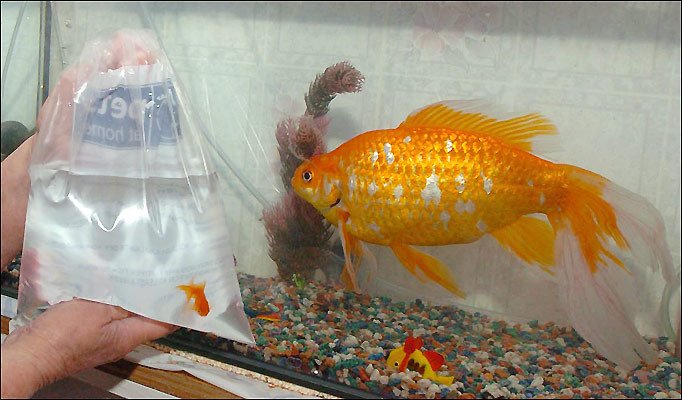
Goldfish placed in bowls or large fish placed in small tanks get stunted. Being stunted is not fun. It shortens their lifespan substantially and causes tons of health issues. The common story I get from my customers is “Well, they only grow to the size of their tank! That means I can control how large they get.” What they aren’t understanding is that the fish is still growing, just now externally. Internally, their organs are still growing but crammed into a tiny body. Organs rupture, spines get contorted, and fish choke on their own bodies. It’s not humane and results in a horrible, painful death. Did you know goldfish have been known to live up to 15 and even 30 years depending on the species? Bragging that your goldfish lived 4 years is not as positive as you may think it is. I’m here to change that.
Goldfish in particular are fish I like to refer to as “pugs of the fish world.” They have breathing issues so they need extra oxygen in their water. They poop way more than you might think so they need extra water cleaning days. Some species such as fantail goldfish need 20+ gallons of space per goldfish. Meanwhile, comet goldfish need up to 75 gallons for a single fish, which is why they make great pond fish. These are not beginner fish, please don’t take them lightly. The same goes for the common plecostomus, or as people love to call them the “sucker fish”. They get easily over a foot and a half long and they won’t eat algae for the majority of their lives. They will actually end up sucking the slime coat off of other fish if not fed properly and kill other fish.
“I don’t know what fish to get”

I love recommending livebearers to start a tank for beginners. When I say livebearers, I’m talking about fish that lay eggs internally and give birth to live fish. livebearers consist of mollies, platies, guppies, and swordtails. They get around 2-3 inches and are very lively and come in a lot of fun colors. They’re relatively peaceful (they can sometimes get nippy with each other if the gender ratio is off) and aren’t schooling. Schooling fish need at least 6 of their own kind, which can be annoying for some people. I don’t like to recommend neon tetras, even though they’re stunning little fish, because they are incredibly fragile to stress. You can also do danios as a small schooling fish.
If you have a 20+ gallon tank, you can try out skirt tetras. Skirt tetras come in “normal” colors but you can also find their Glofish counterparts in fun colors such as red, blue, purple, green, and yellow. Dwarf gouramis make wonderful centerpiece fish in 20+ gallon tanks but you can only keep one as they’re aggressive (and cousins to the betta fish). Bristlenose plecos are similar to that of the common pleco except they only get 6 inches long, but they also do not eat algae for the majority of their lives and will need some natural driftwood to eat off of. Cory catfish are wonderful schooling bottomfeeders but they do prefer a sand substrate for their sensitive bellies. Kuhli loaches have won my heart with their unusual eel-like appearance but they are also schooling so keep that in mind. There are so many options available, you just have to look.
Shopping List
We’ve talked about a lot of stuff so let’s talk about a generic shopping list to get you started.
- An aquarium that fits your space and can hold the fish you want to keep
- A tank stand (if you get anything over a 20-gallon tank, as most furniture cannot hold the weight of an aquarium. Remember, it’s about 10 lbs per gallon, meaning a 10-gallon tank is 100 lbs!)
- A filter designed for the gallon size of your tank
- Water conditioner (like Seachem Prime)
- A bacteria starter (like Seachem Stability)
- A gravel vacuum or siphon
- A bucket for water (dirty and clean)
- Substrate (gravel, sand, or plant substrate)
- Decor or live plants. Places for your fish to hide in, rest on, etc.
- A heater if you’re doing tropical fish (goldfish do not need a heater)
- A thermometer for inside your tank (to monitor that your heater is working)
- Fish food
- A net (for fishing out your new aquatic friends from their transport bag or for getting rid of deceased ones)

Hey there! We really enjoy reading people’s blogs and the thoughtful content that creators like you produce . Your unique perspective contributes to the diverse online community that we all admire. Keep sharing and inspiring your audience, because your ideas can make a significant impact on the world. We can’t wait to read what you’ll produce next!
Thanks – http://www.pomeranianpuppies.uk
LikeLike
Great Read Can i leave my thoughts ?! –
Thanks for reading , Love The Blog !!
Thanks – TheDogGod – Pomeranian Puppies & Adult Dog Guides & Tips pomeranianpuppies.uk
LikeLike
hey
cool blog 🙂 will give it a follow and a like !
LikeLike